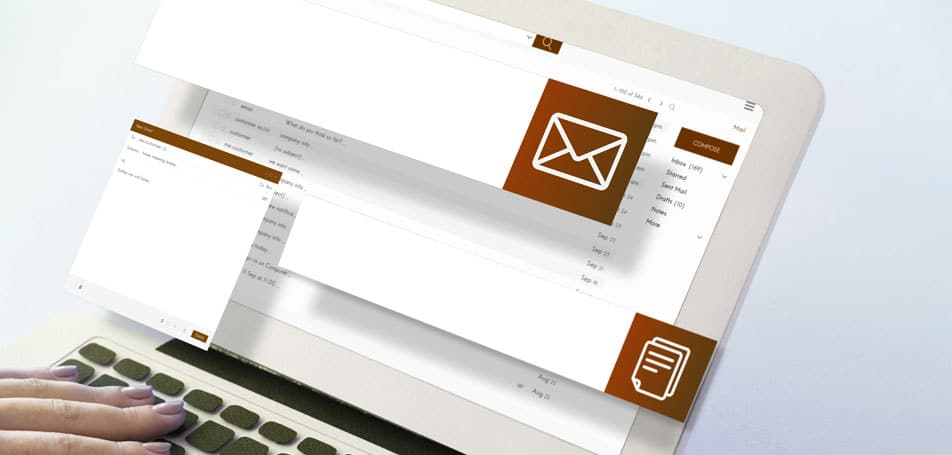
Globally, over 290 billion emails are exchanged every single day, and this number is only expected to increase in the coming years. In fact, experts predict that there will be 4.3 billion regular email users by 2023, which speaks volumes about the increasing accessibility of the internet around the world. During this time, retailers should be expanding their email marketing strategies and leaning into new technologies to boost open rates and increase conversions.
According to statistics from Influencer Marketing Hub, businesses can earn up to $44 for every dollar they spend on email marketing. With this kind of ROI in mind, you can’t afford to invest in email marketing! To get you started on the right foot, consider these top 5 recommendations to update and refresh your current strategies:
1. Incorporate interactive elements.
Videos or GIFs can help your brand stand out in the slew of emails that customers get bombarded with every day. Incorporating a short product tutorial, an unboxing video, or a product review in your email messages can increase click-through rates by 65%. Furthermore, 90% of consumers report that they find product videos helpful when they’re thinking about buying something. In short, add a little action to capture your audience’s attention!
2. Identify opportunities to use AI and AR.
In 2020, nearly 60% of consumers reported using voice search at least once to find out information about a business or a product. Google’s voice search algorithms have advanced to the point where they can understand human speech with up to 95% accuracy, and the prevalence of smart speakers makes using voice search more convenient than ever. These major developments in AI are going to be increasingly important when it comes to SEO for voice search.
AR will also continue to increase in popularity as people seek “real-life” experiences in virtual settings. For example, makeup and fashion brands let users virtually try on different looks, and furniture companies let people see how different pieces will fit in their homes before they buy them. In 2021, expect to see AR capabilities in new industries as retailers strive to make online shopping more engaging and fun..
3. Create minimalistic and mobile-friendly designs.
“Consumers nowadays are swamped with advertisements,” explains writer Milica Vujasin. “Their brains are so fed up with images, colors, texts that a simple minimalist design with a clear message will definitely stand out more.”
Bright colors and flashy banners come across as cliche and overly “sales-y,”, especially to younger customers. To make an impact, make your messages easy on the eyes. Focus on simple color palettes, and easy-to-read fonts, and remove any excess clutter. Include helpful tidbits of information to offer value, or provide a direct link to a support chat. Lastly, since 46% of all emails are opened on mobile devices, make sure to test out your email templates before sending them to your audience.
4. Properly segment your audience.
As previously mentioned, people might receive dozens of emails every day. If someone interprets an email’s subject line as generic, impersonal, or irrelevant, chances are that they’ll delete it without even opening the message. Personalization is key in email marketing, and it all begins with audience segmentation.
Segmentation involves sorting your customers into similar groups and then customizing different emails to meet each group’s specific needs or interests. Some common segmentation types include:
- Demographics. Demographics consider the basic attributes of a person’s age, race, or gender. A skincare brand, for instance, might choose to segment customers to recommend the most relevant products for their age range (i.e., wrinkle cream for those 50 years and older, acne-fighting solutions for teens, etc.).
- Behaviors. This segmentation type is based on the specific actions or habits of a group of people. You can segment shoppers based on what social media sites they use, what types of products they’ve purchased before, or what type of device they usually use to browse your website.
- Psychographics. This lesser-known type gives you a deeper insight into the mindsets, perspectives, likes, and dislikes of your audience. You could potentially segment customers based on common interests outside of your brand, their common values, or specific lifestyle choices.
- Geographics. This segmentation type is pretty straightforward. You can separate groups of people based on their location to deliver the most relevant information or product recommendations.
5. Set up automated drip campaigns.
A drip campaign is an automated set of emails that are sent to a user after they complete a specific action. For example, a first-time customer might receive a series of welcome emails that share facts about the brand or offer discount codes for their next purchase. Other types of drip campaigns might include:
- Promotional campaigns, such as semi-annual sales, BOGO deals, or other special offers.
- Loyalty program messages, like information about early access to new products or updates about loyalty rewards.
- Cart abandonment reminders to entice people to complete a transaction.
- Follow-up emails to ensure that a customer’s problem got resolved, they received the correct product or were satisfied with their purchase.
- Birthday or holiday cards.
- Invitations to webinars, online communities, or virtual events.
When done correctly, targeted email campaigns can increase click-through rates by 119% more than generic, non-personalized emails.
If you want to create drip campaigns with ease, Magento Marketplace has plenty of email marketing tools and extensions to streamline the entire process. Feel free to browse the available options or connect with a Wagento developer to learn more about the top eCommerce strategies for your business!


















